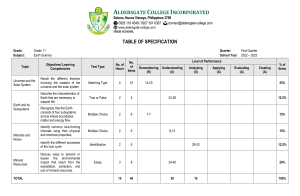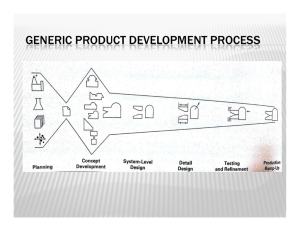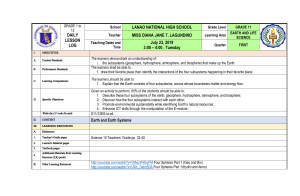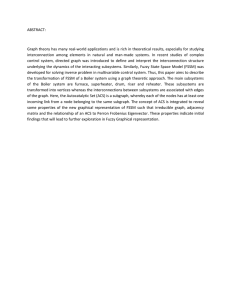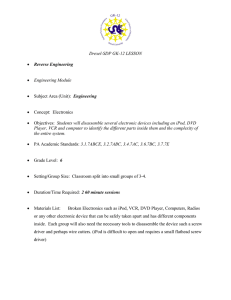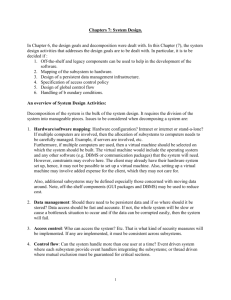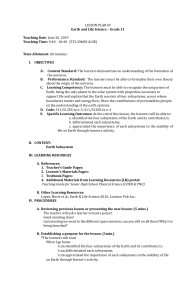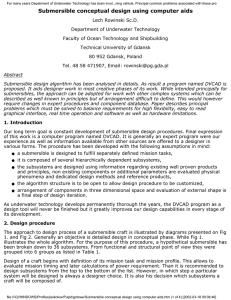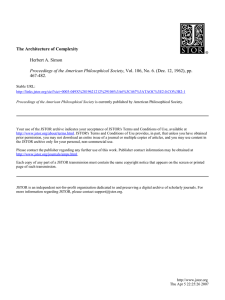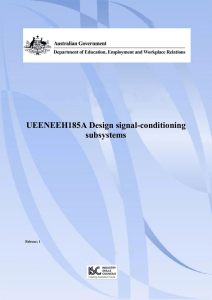4.195. Special Problems in Architectural Design. ... Shen Exercise II : House Analysis
advertisement
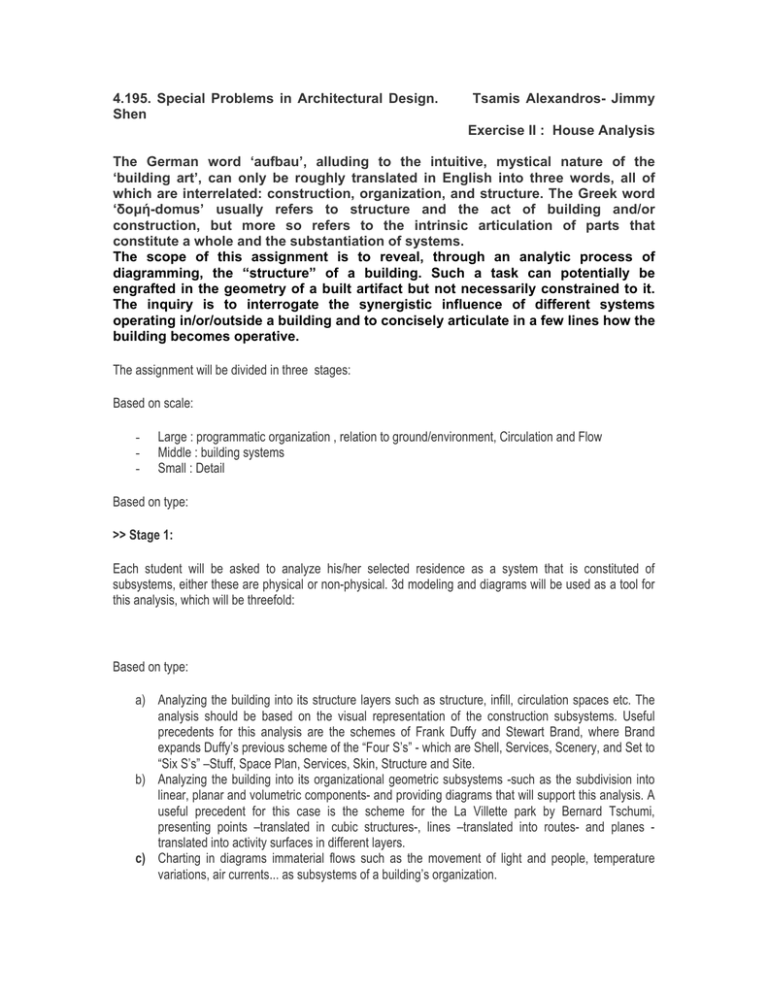
4.195. Special Problems in Architectural Design. Shen Tsamis Alexandros- Jimmy Exercise II : House Analysis The German word ‘aufbau’, alluding to the intuitive, mystical nature of the ‘building art’, can only be roughly translated in English into three words, all of which are interrelated: construction, organization, and structure. The Greek word ‘δοµή-domus’ usually refers to structure and the act of building and/or construction, but more so refers to the intrinsic articulation of parts that constitute a whole and the substantiation of systems. The scope of this assignment is to reveal, through an analytic process of diagramming, the “structure” of a building. Such a task can potentially be engrafted in the geometry of a built artifact but not necessarily constrained to it. The inquiry is to interrogate the synergistic influence of different systems operating in/or/outside a building and to concisely articulate in a few lines how the building becomes operative. The assignment will be divided in three stages: Based on scale: - Large : programmatic organization , relation to ground/environment, Circulation and Flow Middle : building systems Small : Detail Based on type: >> Stage 1: Each student will be asked to analyze his/her selected residence as a system that is constituted of subsystems, either these are physical or non-physical. 3d modeling and diagrams will be used as a tool for this analysis, which will be threefold: Based on type: a) Analyzing the building into its structure layers such as structure, infill, circulation spaces etc. The analysis should be based on the visual representation of the construction subsystems. Useful precedents for this analysis are the schemes of Frank Duffy and Stewart Brand, where Brand expands Duffy’s previous scheme of the “Four S’s” - which are Shell, Services, Scenery, and Set to “Six S’s” –Stuff, Space Plan, Services, Skin, Structure and Site. b) Analyzing the building into its organizational geometric subsystems -such as the subdivision into linear, planar and volumetric components- and providing diagrams that will support this analysis. A useful precedent for this case is the scheme for the La Villette park by Bernard Tschumi, presenting points –translated in cubic structures-, lines –translated into routes- and planes translated into activity surfaces in different layers. c) Charting in diagrams immaterial flows such as the movement of light and people, temperature variations, air currents... as subsystems of a building’s organization. >> Stage 2: Following the first stage of analysis, each student will be asked to evaluate the relevant significance of subsystems, meaning to identify which ones constituted driving/primary forces for the building and which were developed accordingly to the primary ones. The scope is overlay the different subsystems that were put together for stage 1 and to visualize the combinatorial effect of the diagrams produced in stage 1 and to precipitate the ‘domus’ of the building. At this stage clues will be drawn from the narrative that the architect uses in order to describe his/her building. >> Stage 3 If the scope in the second stage was to think of the building as a synthesis of different systems some of which were prevailing and others secondary, the scope in this stage is to discover the local synergies hidden in the subsystems if these are brought together. Such instances are likely to be located in nondesignated functions of the household, thresholds or in other words places where different parameters diagrammed in the previous phases create conditions significant to the operation of the building and to the conception of its structure . Due dates: -Wednesday 9 : First short (4min) presentation of existing material of your house. -Monday 14 : Stage 1 of house analysis. In class desk discussion. -Wednesday 16 : Stages 2 and 3 of house analysis. In class desk discussion. - Monday 28 : Final presentation of all material of house analysis. (electronic presentation)

